Why Tarantula Rehousing is Important
Rehousing your tarantula is a critical aspect of responsible pet ownership. It ensures the well-being and longevity of your eight-legged friend. Providing a clean, appropriately sized enclosure is essential for their health and happiness. A well-maintained habitat minimizes stress, promotes healthy molting cycles, and reduces the risk of various health issues. Regular rehousing prevents the build-up of waste and detritus, which can lead to unpleasant odors and the proliferation of harmful bacteria or mites. Moreover, a larger enclosure allows for adequate space for movement, hunting, and burrowing, which satisfies the natural behaviors of your tarantula, enhancing their overall quality of life. The process, while seemingly simple, can be tricky, and watching tarantula rehousing videos can provide a great guide on how to do it.
Understanding Tarantula Behavior
Before starting the rehousing process, understanding your tarantula’s behavior is paramount. Tarantulas can be skittish and defensive, and some species are more prone to biting or flicking urticating hairs than others. Observe your tarantula’s temperament: is it calm, defensive, or aggressive? Note its posture: a threat pose typically involves raising the front legs, fangs exposed, and abdomen raised. Understanding these cues is crucial for a safe and stress-free rehousing experience. Learning your tarantula’s typical behavior, and any deviations from it, will help you anticipate their reactions and handle the situation with confidence. Additionally, consider the time of day; tarantulas are often more active at night. Watching tarantula rehousing videos can assist with this.
Signs Your Tarantula Needs Rehousing

Several indicators signal that your tarantula needs rehousing. One key sign is outgrowing its current enclosure. If your tarantula is consistently bumping into the sides of its habitat, it’s time for an upgrade. Another telltale sign is a heavily soiled enclosure. Accumulation of waste and uneaten food not only creates a bad smell but also poses a health risk. Inspecting the enclosure for mold growth or the presence of mites is essential. If you find any, immediate rehousing and thorough cleaning are necessary. Furthermore, a complete substrate change every 6-12 months, regardless of size, is typically recommended to maintain optimal hygiene and minimize the risk of disease. Consider watching tarantula rehousing videos to prepare for this process.
Preparing for Rehousing
Proper preparation is key to a successful rehousing. Rushing the process can lead to unnecessary stress for the tarantula and potential injury to both the spider and the handler. This section is all about getting prepared. Planning ahead will save you a lot of trouble. This includes gathering all necessary supplies, preparing the new enclosure, and understanding the steps involved in transferring your tarantula. Preparing the new enclosure in advance is a must, ensuring it’s ready to receive your pet immediately after the move. A smooth transition will reduce stress and allow your tarantula to quickly adapt to its new home. Watching tarantula rehousing videos can help you gather the right supplies and prepare.
Gathering Your Supplies
Before you begin, assemble all the necessary supplies. You’ll need a new enclosure, substrate, water dish, and any decorative items you wish to include. Essential tools include a pair of long tongs, a soft-bristled brush, and a small container for the tarantula to temporarily reside in if needed. Having everything on hand will make the process smoother. Consider using a clear container for temporary housing so you can observe your tarantula. Also, prepare a spray bottle with water for misting the enclosure if your tarantula prefers a humid environment. Ensure all tools are clean and free of any chemicals that could harm your tarantula. Referencing tarantula rehousing videos will give you insight on what supplies are useful.
Choosing the Right Enclosure
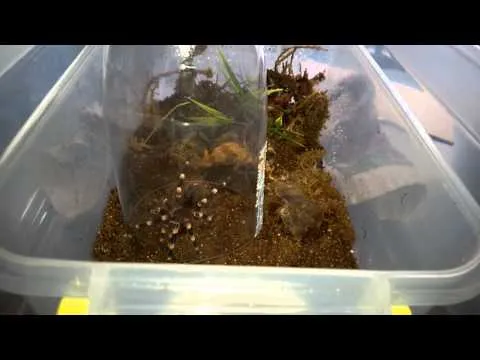
Selecting the right enclosure size and type is vital for your tarantula’s well-being. The enclosure should be large enough for your tarantula to move around comfortably but not so large that it feels overwhelmed. Consider the species and its size when choosing. For terrestrial species, a wider enclosure is ideal, while arboreal species benefit from a taller habitat. Ensure the enclosure has adequate ventilation to prevent mold and humidity build-up. The lid should be secure and escape-proof. Choose a material that is easy to clean and maintain, such as glass or clear plastic. Observing tarantula rehousing videos will give you an idea on the best enclosure for your specific tarantula.
Setting Up the New Enclosure
Once you’ve chosen an enclosure, set it up before introducing your tarantula. Add substrate to the appropriate depth, considering the species’ burrowing habits. Provide a water dish, and any decorations such as hides, plants, or cork bark. Ensure the water dish is stable and easy for the tarantula to access. If you’re keeping a humid environment, mist the enclosure lightly to maintain the desired humidity level. Avoid overcrowding the enclosure with too many decorations, which can restrict movement. Ensure the enclosure is free of any hazards, such as sharp edges or objects that could topple over. Study some tarantula rehousing videos to see some good enclosure setups.
The Rehousing Process Step-by-Step
The rehousing process requires patience, careful handling, and a calm environment. Avoid sudden movements or loud noises that could startle your tarantula. The following steps provide a comprehensive guide to safely and effectively rehousing your tarantula, minimizing stress for both you and your pet. Before starting, it’s always a good idea to review some tarantula rehousing videos.
Step 1 Preparing the Old Enclosure
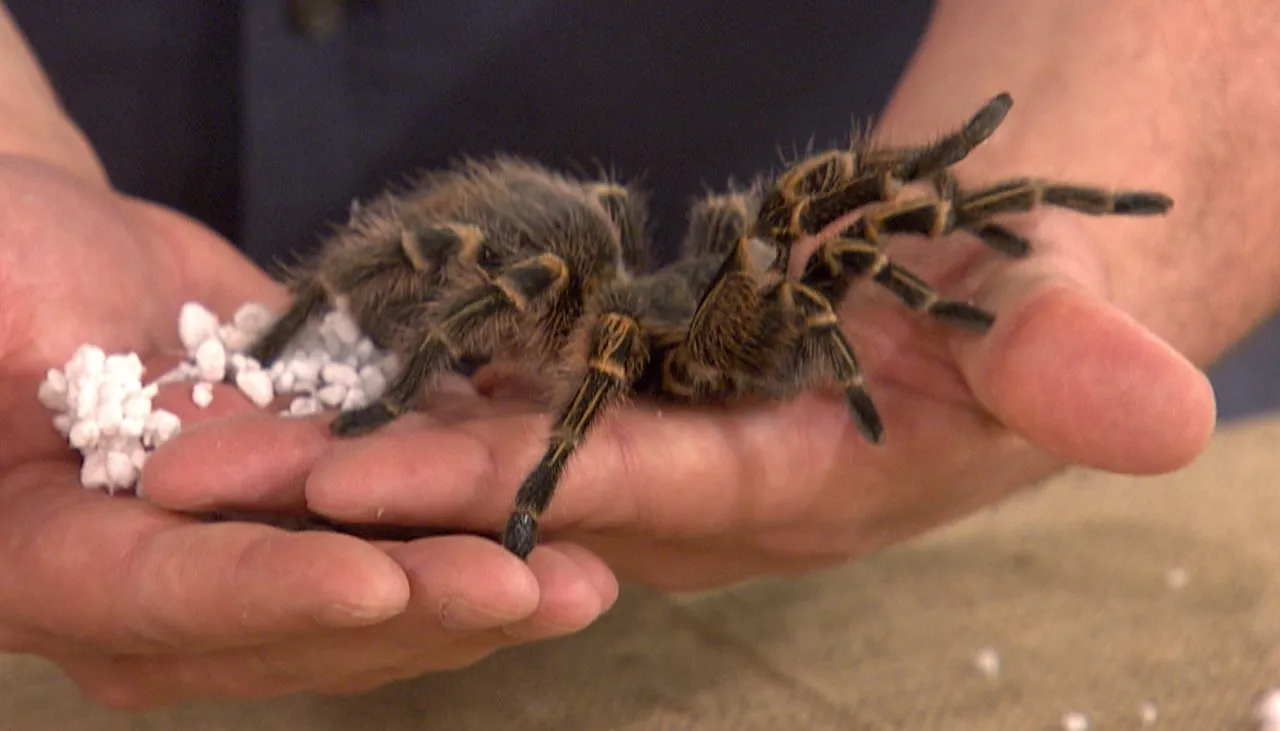
Before disturbing your tarantula, gently remove any decorations that could obstruct the transfer. This includes hides, water dishes, and any loose items. If the tarantula is in a burrow, you may choose to leave the burrow intact or gently encourage the tarantula to move out. If you decide to move the hide, do so with caution, being mindful of the tarantula’s location. Prepare the new enclosure by placing it close to the old one. This will minimize the distance and stress of the move. Have your tools ready, including your tongs or a soft brush, to gently guide the tarantula. The goal is to make the transition as seamless as possible, and this step sets the stage for success. Remember to consult tarantula rehousing videos.
Step 2 Gently Moving the Tarantula
The method of moving the tarantula will vary depending on its temperament and the setup of the enclosure. The goal is to gently coax the tarantula into the new enclosure without causing harm or stress. You can use long tongs to gently nudge the tarantula, but avoid grabbing or forcing it. Alternatively, you can use a soft brush to gently guide the tarantula toward the new enclosure. For more defensive species, consider using a small container to trap the tarantula and then carefully placing the container in the new enclosure. Always be patient and avoid making sudden movements. Reviewing tarantula rehousing videos can help you decide on the best method for your tarantula.
Step 3 Transferring to the New Enclosure
Once the tarantula is ready to move, carefully transfer it to the new enclosure. If you used a container, gently tip the container to allow the tarantula to walk out. If you used tongs, carefully place the tarantula in its new home, ensuring it is in a safe position. Once the tarantula is in the new enclosure, remove any tools or containers you used. Close the lid securely to prevent escape. Observe the tarantula’s behavior for a few minutes to ensure it is settling in comfortably. This step requires a steady hand and a calm approach to ensure the safety of your tarantula. Some tarantula rehousing videos demonstrate this well.
Step 4 Final Touches and Observations
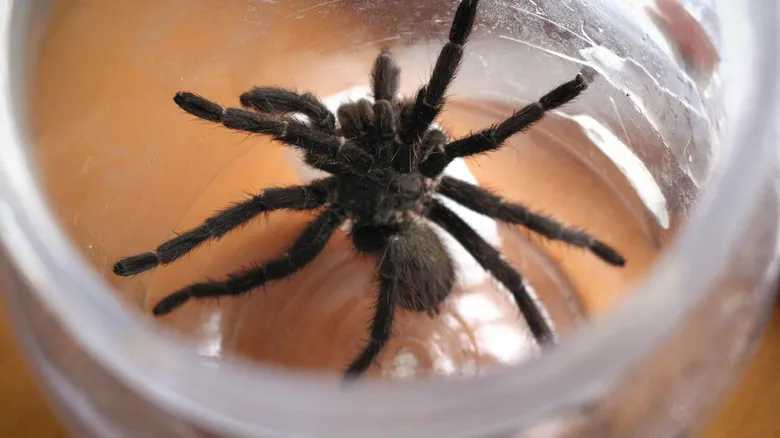
After the tarantula has been moved, make any final adjustments to the new enclosure. Replace any decorations, such as hides or plants, in the new habitat. Ensure the water dish is accessible and properly filled. Clean the old enclosure and dispose of the old substrate. Observe the tarantula for a few days to ensure it is adapting to its new environment. Look for signs of stress, such as hiding constantly or refusing to eat. Provide the tarantula with a few days to acclimate to its new home before attempting to handle it. Take notes on your observations for future reference, documenting the behavior and any changes you observe. It can be useful to revisit tarantula rehousing videos for reference and to learn from others’ experiences.
Common Mistakes to Avoid
While rehousing your tarantula, several common mistakes can lead to complications. These errors can stress the spider or even lead to injuries. Understanding these mistakes and taking steps to prevent them is critical to a successful rehousing experience. This is an important aspect of caring for your tarantula, so you should have a good understanding of it. Remember to view tarantula rehousing videos to learn from experts.
Rehousing Too Frequently
Rehousing your tarantula too often can cause undue stress. Frequent changes to the habitat can disrupt their routine and lead to anxiety, affecting their feeding behavior and overall health. Rehousing should only be done when necessary, such as when the tarantula outgrows its enclosure, the substrate needs a change, or there is a hygiene issue. Stick to a schedule that prioritizes the tarantula’s well-being. Remember that rehousing is stressful for the spider, and doing it too often can cause problems. Review tarantula rehousing videos to learn more.
Using the Wrong Tools
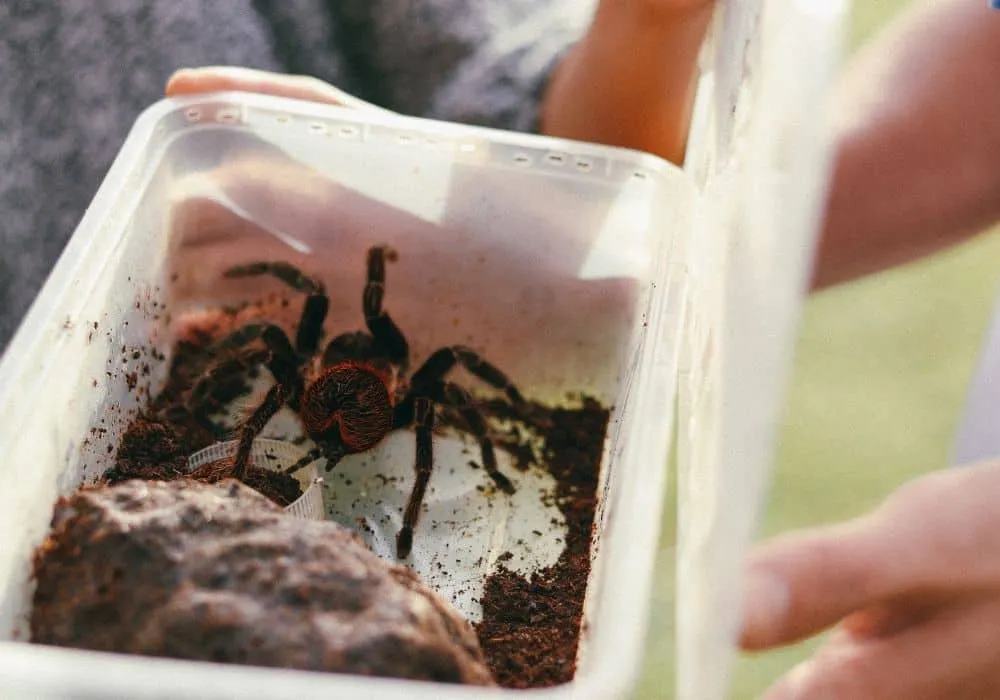
Using the wrong tools can put your tarantula at risk. Sharp tools, like tweezers, can injure the spider. Rough handling or grabbing the tarantula directly can also cause stress and potential damage. Always use appropriate tools, such as soft brushes or tongs, that won’t harm your tarantula. Selecting the right tools, such as those demonstrated in tarantula rehousing videos, is key to a safe rehousing process.
Failing to Observe the Tarantula
Not observing your tarantula’s behavior is a common mistake. Each species has its temperament, and understanding your spider’s personality is critical. Before handling or rehousing, note its posture, any signs of stress, and how it reacts to your presence. Rushing the process without paying attention to the animal’s signals can lead to accidental bites or unnecessary stress. Watching tarantula rehousing videos will help you understand this.
Post Rehousing Care
After rehousing, it’s crucial to provide the proper care to help your tarantula settle in. This will facilitate a smooth transition to its new home and encourage its health and happiness. Careful observation and consistent care are crucial during this period. Following the below advice will help you with the care of your tarantula. Make sure you check out some tarantula rehousing videos for additional guidance.
Monitoring Your Tarantula

Closely monitor your tarantula’s behavior in the new enclosure. Observe its activity levels, feeding habits, and any signs of stress, such as hiding excessively or refusing to eat. Check the enclosure regularly for any unusual changes, such as mold growth or an overly humid environment. Make sure to note any unusual behavior, such as the tarantula showing defensive behavior. If you notice any problems, make adjustments to the enclosure or consult with an expert if needed. Following the rehousing process, use the guidelines from tarantula rehousing videos for the proper care.
Providing Food and Water
Ensure your tarantula has access to fresh water at all times. Refill the water dish regularly and keep it clean. Offer food based on the species’ needs and the tarantula’s size. Avoid overfeeding, and remove any uneaten prey items to prevent mold or mites. Make sure the water is clean. Many tarantula keepers recommend cleaning the water dish daily. Check tarantula rehousing videos to ensure you are handling the food properly.
Cleaning and Maintenance
Maintain a clean enclosure to keep your tarantula healthy. Spot-clean the enclosure regularly, removing any waste or uneaten food. Replace the substrate as needed, typically every 6-12 months, or sooner if it becomes soiled. Regularly check the enclosure’s ventilation and humidity levels. Regular maintenance and cleaning will prevent many health and hygiene problems. Consider referencing tarantula rehousing videos to see the cleaning process.
Where to Find More Rehousing Videos
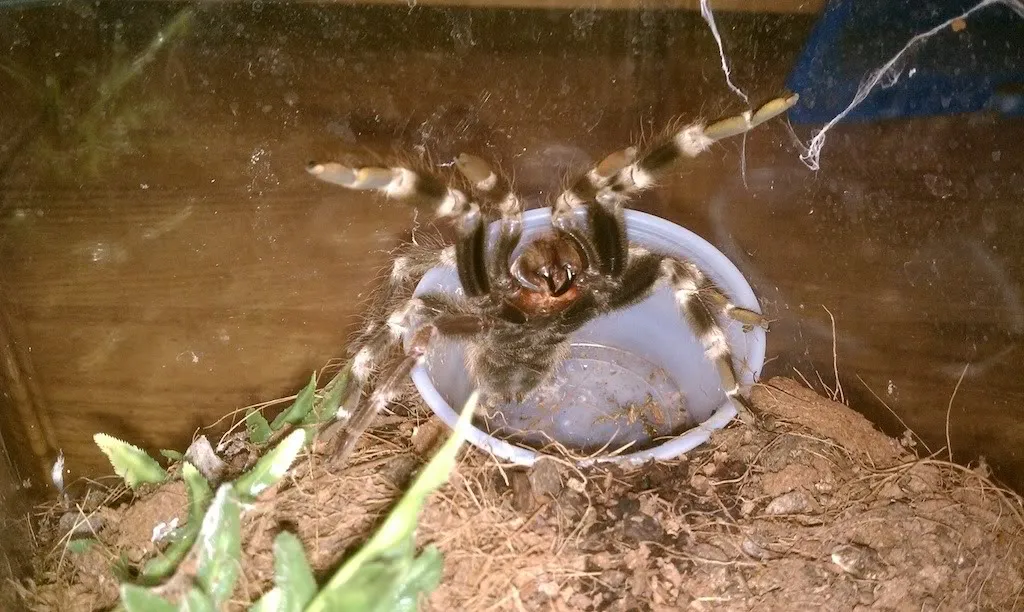
To further enhance your knowledge and skills in tarantula care, exploring the resources available through videos is highly recommended. Watching tarantula rehousing videos can offer valuable insights into real-life examples, common mistakes, and expert tips, enhancing your understanding of the rehousing process. Several platforms are readily available and can help you learn how to rehouse your tarantula. It’s all about doing your research.
YouTube Channels
YouTube is an excellent platform for finding a wide variety of tarantula rehousing videos. Many experienced keepers and breeders have created channels dedicated to tarantula care. Search for channels that focus on tarantula rehousing videos, and you’ll find many tutorials, step-by-step guides, and demonstrations. Some popular channels offer detailed instructions, tips for different species, and even address common questions. Make sure to check the comments section of the videos, where you can usually find more information. Remember to verify the information with other sources.
Online Forums and Communities
Online forums and communities offer another great resource for accessing tarantula rehousing videos and information. Many online forums and groups, such as those on Facebook or Reddit, have large communities of tarantula keepers who share their experiences. Use the search feature on these forums to look for relevant discussions, videos, and advice on tarantula rehousing. You can often find videos posted by fellow enthusiasts. These platforms also give you the opportunity to ask questions and get answers from experienced keepers. Be sure to seek advice from reputable sources and always cross-reference information.
